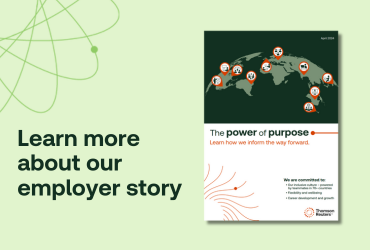As businesses continue to expand their global footprint, the importance of effective global payroll management has become increasingly crucial. In a recent discussion, Mariah Hantis, Senior Director, Global Operations, Payroll, and Benefits at Deel, provided insights into the key challenges, emerging trends, and best practices surrounding global payroll strategies.
Jump to ↓
| Regulatory obstacles |
| Consolidating payroll services |
| The role of technology |
| Partnering with payroll service providers |
| Best practices for global payroll strategy |
Regulatory obstacles
Employers identify one major challenge as navigating the constantly evolving compliance landscape across various countries. Hantis emphasized that “keeping up with all the ever-changing regulations” is a constant struggle for organizations as they expand their operations globally. This includes staying up to date with labor laws, worker classification rules, and other country-specific requirements.
In 2025, regulatory changes in payroll and labor laws are shaping employment landscapes both in the United States and Europe. In the U.S., federal updates include potential adjustments to the Tax Cuts and Jobs Act and revisions to Labor Department rules on overtime pay and worker classification, while some states are introducing initiatives to exclude tips and overtime pay from gross income for tax purposes.
In Europe, the upcoming implementation of the Pay Transparency Directive in 2026 will require employers to disclose gender pay gaps and provide detailed salary data, posing potential compliance challenges for organizations operating across EU member states.
Hantis added that although this complexity may be inherent in the current landscape, there is potential for greater efficiency and streamlined processes in the future.
Consolidating payroll services
To address the compliance hurdles, Hantis noted the growing trend towards consolidating payroll services. She explained, “I think businesses and employers are craving that one solution to say, ‘Where can I manage all of my data?'”
Hantis said that businesses previously relied on fragmented systems with multiple providers, logins, and platforms, which created inefficiencies and frustrations. “And next thing you know, you’re 10 different logins, 10 different processes, 10 different contacts for all of these different payrolls that you’re trying to run,” she stressed.
Hantis stated this consolidation not only streamlines the payroll process but also provides a centralized source of truth for reporting and decision-making.
The role of technology
The role of technology in enhancing global payroll management was another key focus. Hantis noted the potential of AI and automation to improve efficiency, reduce processing time, and empower payroll professionals to take on more strategic responsibilities within their organizations.
She highlighted tools such as built-in payroll calendars as examples of how payroll systems can be optimized through technological advancements.
Hantis emphasized that leveraging these technological advancements can also significantly improve the employee experience by providing immediate and accurate payroll information.
Hantis further explained that these technologies have the capability to greatly enhance the employee experience by delivering immediate and accurate payroll information. This ensures that employees feel supported and confident in the reliability of their payroll system. By leveraging these tools, organizations can create a seamless, transparent experience for employees, fostering trust and satisfaction.
According to Hantis, payroll management is inherently tied to a critical aspect of employee well-being. “When you are trusted with someone’s payroll, you are trusted in a very dramatic sense, with their life,” she remarked.
She said that confidence in payroll systems is built through availability, accuracy, and strict compliance, all of which can be strengthened by embracing technological advancements.
Partnering with payroll service providers
Payroll service providers serve as crucial partners in facilitating global expansion. Hantis explained that these providers can help businesses navigate the complexities of compliance, hiring, and payroll management in foreign markets.
She noted that they help businesses chart unfamiliar payroll rules in new countries and build confidence to hire talent abroad through Employer of Record (EOR) functions. Over time, as organizations grow and leverage EOR services across multiple countries, their confidence in global hiring increases, enabling them to establish entities and expand operations further, according to Hantis.
Moreover, she stressed that relying on payroll service providers unlocks global opportunities for both companies and international talent. Businesses can hire skilled professionals from around the world, often at more competitive costs, while providing career opportunities to individuals in regions such as India or Spain.
Best practices for global payroll strategy
When it comes to best practices for a successful global payroll strategy in 2025, Hantis stated the “biggest thing is localized payroll teams” to provide on-the-ground support tailored to specific regions. Unlike situations where providers rely on offshore teams with limited local expertise, having payroll and HR professionals located in the target region ensures a deeper understanding of local rules, languages, and cultural nuances.
“I have an HR team sitting in the Netherlands, who speak the language, who know the rules, who are on the ground there that can speak to all of your needs confidently,” she hypothetically posed.
Hantis reiterated the importance of maintaining compliance, leveraging technology, and fostering effective communication between businesses and their payroll service providers. She also emphasized the need for businesses to collaborate closely with their payroll partners to ensure accurate and timely payroll processing.
“There are various dynamics in these areas that are interesting to explore as you expand your global payroll strategy,” Hantis concluded.








